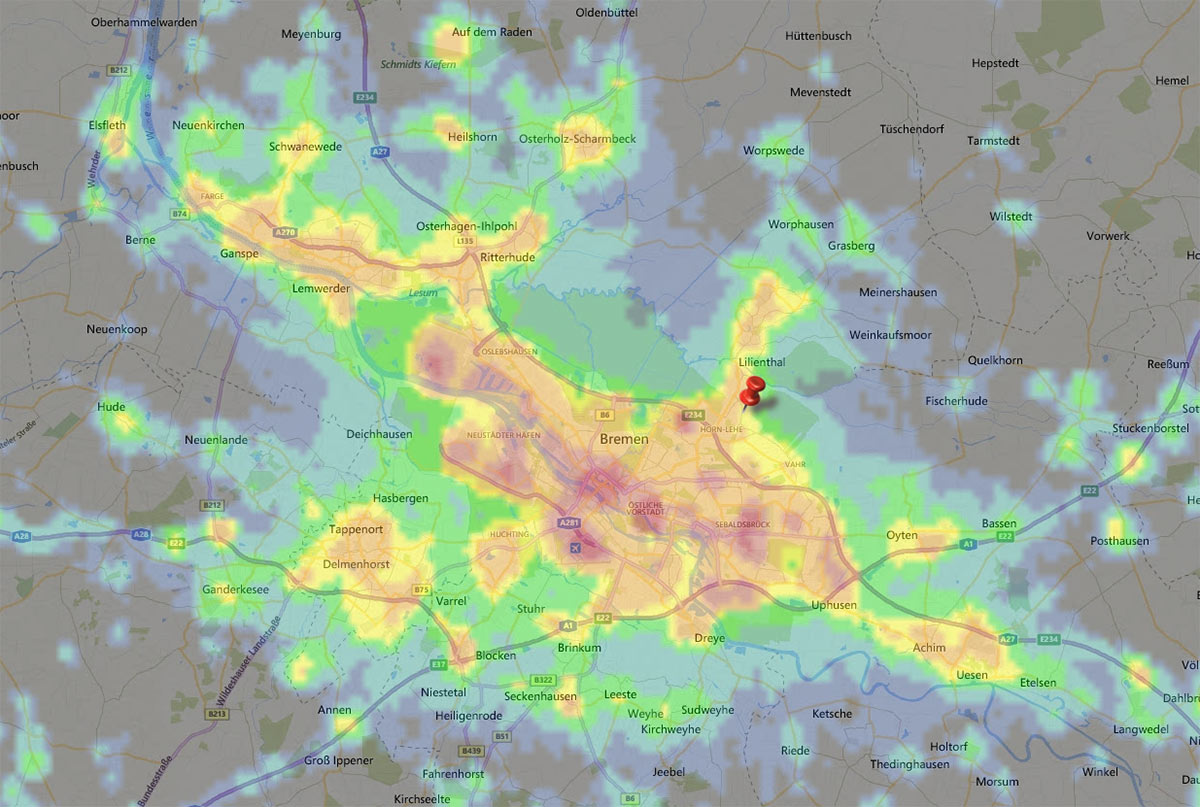Already in October 2017 Frank Iwaskiewicz and I decided on a new Astro-Cooperation. This time the especially weak Planetary Nebula HDW 2 (or Sh2-200) should be photographed together. We knew that it would take us up to 30 hours and more to achieve a pleasing result. The start was then made by Frank in October, I myself could contribute a whole and two half nights until mid-November. After that, nothing happened for many weeks.
Only at the beginning of January there were two clear nights in a row, on which the moon was also gracious. In the meantime I had received the adjustment unit for the Epsilon from Peter Grosspointner, with which I could align Epsilon and Newton exactly to get my dual setup at the start. This worked very well and from now on I can expose with two mirrors at the same time. Guiding takes place off-axis via the 10" Newton. The rotation of the image field is so small, that I had no difficulty in exposing 900 seconds with the small focal length of the Epsilon. I suppose it'll take even longer.
But now back to the HDW 2 project. During the last two project nights I could expose with Epsilon and Newton at the same time. I wanted to use the Epsilon with the small focal length to be able to show a larger field with the PN. The problem with the optics from me and Frank is that the two Newtons have the same focal length (1000 mm), but Frank's Atik 383L+ camera has a larger chip, which results in a 30% larger image field. My Atik 460 EXm therefore only provides a section of Frank's image field. Despite the Atik 490 EXm at 430 mm focal length, the Epsilon has a much larger field than Frank. Thus we have three different picture fields, with which you can "play" with the combination of our single totals pictures.
RGB from Epsilon:
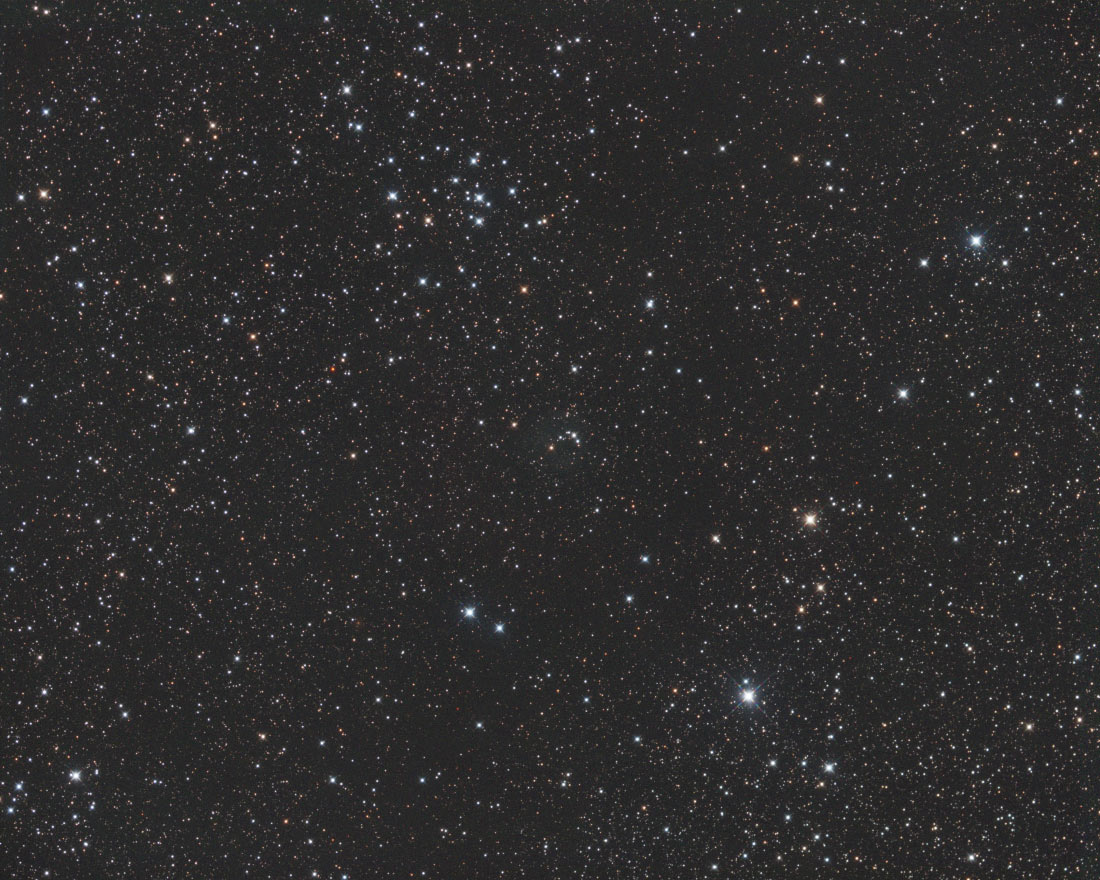
The H-alpha and [OIII] data collected initially proved to be quite weak. Only in the sum the details came out better. In Frank' s [OIII] the humming picture showed strange horizontal strokes, which were hard to get rid of, an effect, which occurred during stacking due to the sigma. Therefore, for the [OIII] combination of Frank used only the portion with the PN and the background is largely hidden:
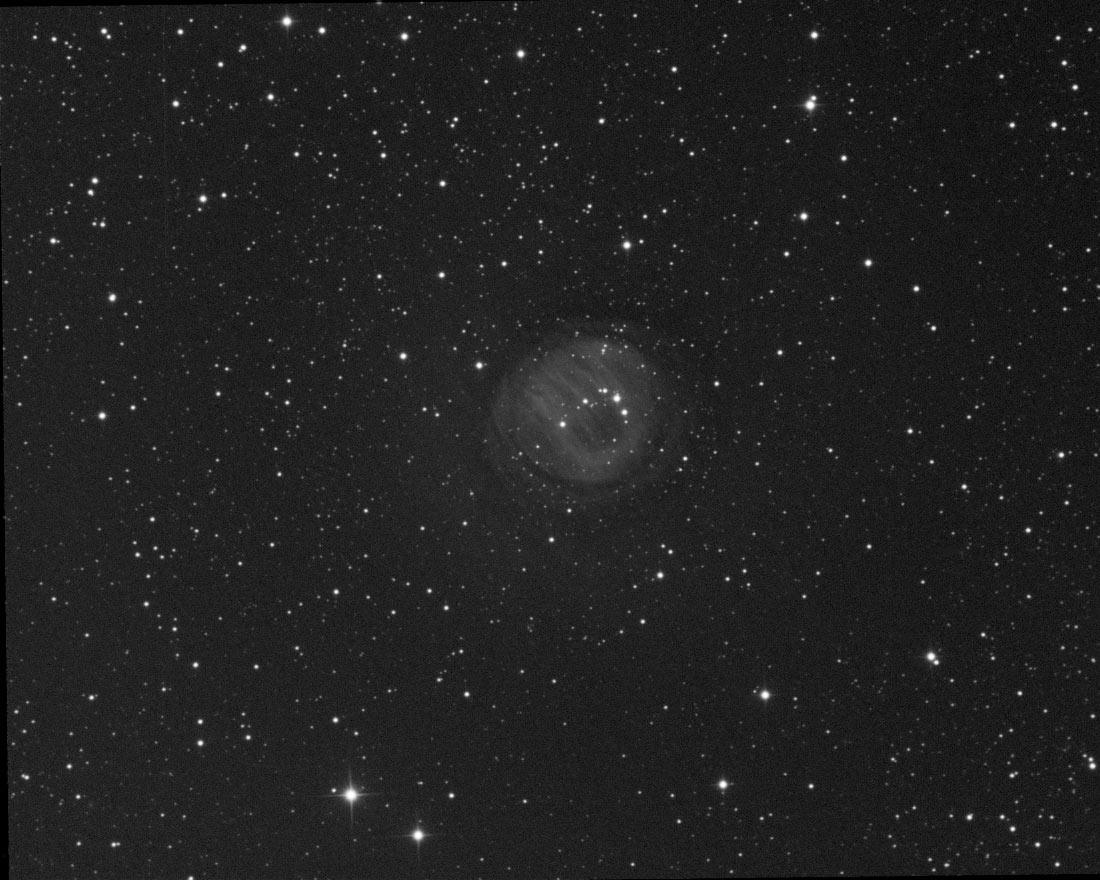
In H-Alpha everything was allright and the stack looks like this:
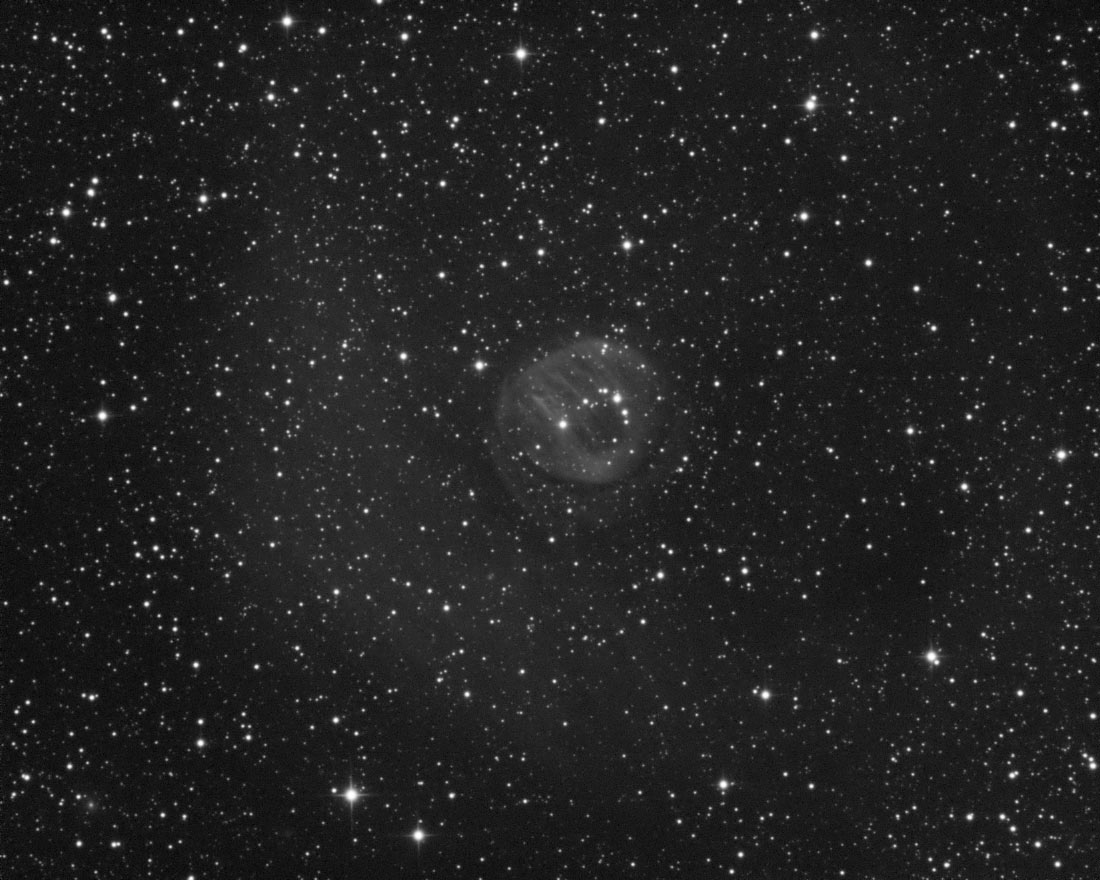
Now we had the problem to combine our two Newtonian image fields. This was only meaningfully possible when we limited ourselves to my smaller image field. After the Epsilon came into play, however, we had a much larger field in RGB and bicolor available. I then combined this with Frank's field and finally with that of my Newton.
As a result, we suddenly had bright stars with 8 spikes, which looked kind of strange. The two Newtons each have the tiller perpendicular to the OAZ, while the Epsilon has turned by 45°. Therefore, the spikes of the two newtons can be placed exactly on top of each other if the images are aligned in the same direction. The Epsilon image above, however, produces four additional spikes turned by 45°.
We encountered this circumstance by removing the spikes of the newton for the large image field and leaving only those of the epsilon. In other image variants with the small field of my Newton we did it exactly the other way around.
Here you can see an example for 8 or 4 spikes:
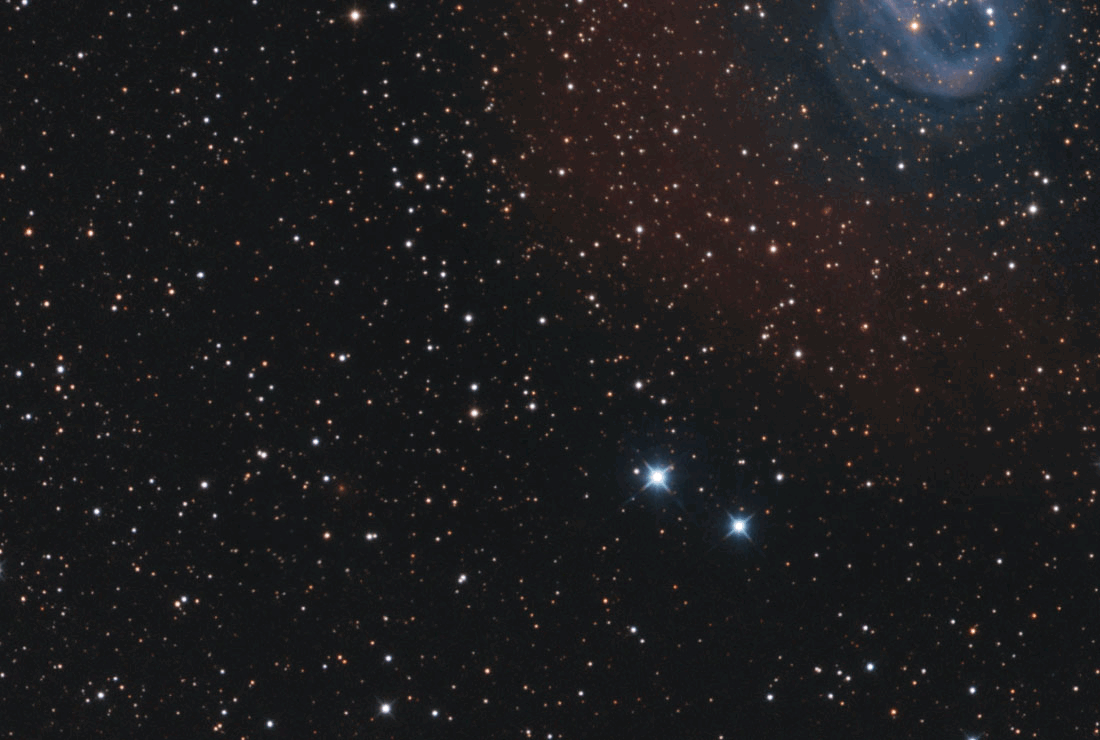
The end result can be seen here ...
The Video on Youtube: https://youtu.be/hfInrqVm-2c
Back
